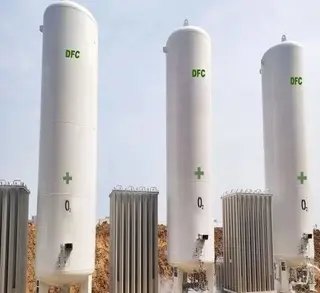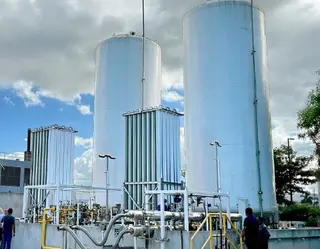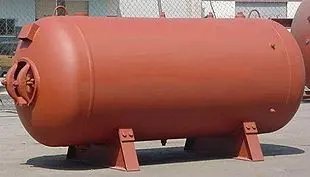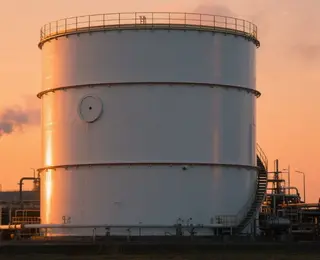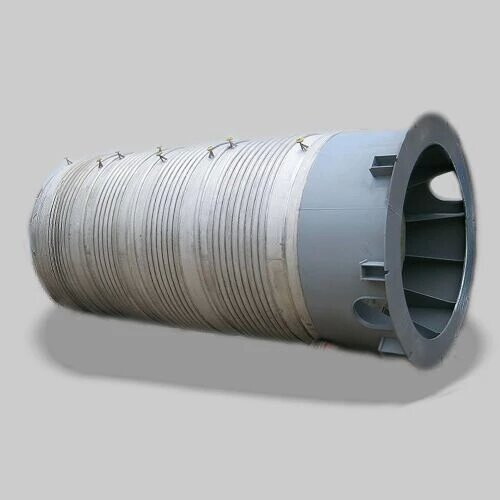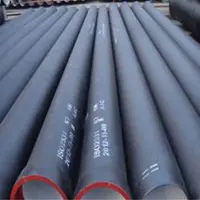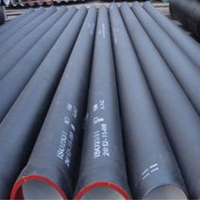Safe Use and Management of Low-Temperature Liquid Oxygen Tanks
In today's industrial production and daily life, low-temperature liquid oxygen tanks play an indispensable role as important equipment. They are primarily used for the storage and supply of low-temperature liquefied gases, such as liquid nitrogen, liquid oxygen, liquid argon, and liquid carbon dioxide. These tanks are widely applied in various fields, including industrial gas transportation, cryogenic equipment manufacturing, centralized oxygen supply systems in hospitals, food quick-freezing and preservation, beverage mixing, greenhouse vegetable gas supply systems, and liquefied natural gas projects. However, due to the hazardous characteristics of low-temperature liquids, the safe use of liquid oxygen tanks is of vital importance. This article will analyze the hazardous characteristics of low-temperature liquids and, in combination with various gas supply modes of liquid oxygen tanks, elaborate on the basic requirements and key points for safe use.
Hazardous Characteristics of Low-Temperature Liquids
Low-temperature liquids have relatively low boiling points. For example, under a pressure of 101.3 kPa, the boiling point of liquid nitrogen is -196°C, liquid oxygen is -183°C, and liquid argon is -186°C. When these low-temperature liquids come into contact with the human body, they can cause severe frostbite to the skin and eyes. Moreover, when there is a small leak or internal leakage in pipes and valves, low-temperature liquids will absorb heat from the surrounding environment, causing the leakage point to quickly condense and frost, and in severe cases, even freeze.
More dangerously, when low-temperature liquids absorb a large amount of heat from the surrounding environment or leak in large quantities, their volume will expand rapidly due to vaporization. Under a pressure of 101.3 kPa and at 0°C, the volume of gas vaporized from 1L of low-temperature liquid is quite astonishing: nitrogen gas is 674L, oxygen gas is 800L, and argon gas is 780L. If these low-temperature liquids vaporize inside a closed container or pipeline, it will lead to an increase in internal pressure, which can easily cause the container or pipeline to explode due to overpressure, with unimaginable consequences.
In the surrounding environment of a liquid oxygen tank, once low-temperature liquids leak and vaporize, they can easily form gas-rich areas. If the concentrations of nitrogen, argon, and carbon dioxide are high, asphyxiation injuries can occur. When the oxygen concentration is high, oxygen-rich injuries can happen. Moreover, oxygen itself is a strong oxidizer with very strong oxidizing properties. Liquid oxygen, when in close proximity to combustible materials, can easily cause combustion when encountering an open flame; it can also produce detonation due to vibration or impact when in contact with combustible materials; and when mixed with combustible materials, it poses a potential explosion hazard. Additionally, liquid oxygen can adhere to clothing fabrics, and once it encounters an ignition source, it can cause flash fires, thereby causing personal injuries.
Gas Supply Modes and Safety Points of Liquid Oxygen Tanks
There are various gas supply modes for liquid oxygen tanks, and different supply methods correspond to different application scenarios and safety requirements. Understanding these modes and their safety points is crucial for ensuring the safe operation of liquid oxygen tanks. Here are several common gas supply modes and their safety points.
1. High-Pressure Cylinder Filling
Liquid oxygen tanks are used as a gas supply source for high-pressure cylinder filling, which is suitable for the needs of numerous dispersed and sporadic gas users. However, this process must be implemented by professional production and filling units in accordance with standardized requirements. According to the current national administrative licensing requirements, filling units must hold a Dangerous Chemicals Production (Storage) Approval Letter, a Work Safety Permit, and a Cylinder Filling License, known as the "one letter and two certificates," in order to legally carry out high-pressure cylinder filling.
At the liquid outlet of the liquid oxygen tank, a low-temperature liquid pump and a high-pressure vaporizer need to be configured. Using a high-pressure filling system, high-pressure gas is filled into special cylinders. Throughout the entire process of cylinder filling, a pipeline low-temperature and overpressure automatic shutdown protection system must be set up. This is to ensure safety, so that when there is still low-temperature liquid at the vaporizer's gas outlet, or when the pipeline pressure exceeds the maximum working pressure of the cylinder, the low-temperature liquid pump should be able to automatically shut down, and the liquid oxygen tank should also stop supplying gas. This can effectively prevent low-temperature liquids from being directly filled into the cylinder, or the cylinder from being over-pressurized, which could lead to explosions and other dangerous situations.
2. Subpacking into Low-Temperature Insulated Cylinders
From the liquid outlet of the liquid oxygen tank, low-temperature liquids can be directly subpacked into low-temperature insulated cylinders and other special small containers using the pressure stored in the tank. This method is mainly used for relatively independent and larger users. When subpacking into low-temperature insulated cylinders, if the cylinder is equipped with a vent valve, it must be opened first to vent. During the subpacking process, operators should pay attention to standing on the side and not lingering for long at the liquid outlet or vent opening to avoid accidents.
If freezing of pipes and valves occurs during the subpacking process, hot water at around 70°C should be used to thaw them. It is absolutely forbidden to use electric heat for baking or to forcibly strike them, as this could trigger danger. At the same time, the subpacking area should maintain good air circulation to prevent the accumulation of low-temperature liquids or gases, thereby reducing safety risks.
3. Centralized Gas Supply through Piping Networks
By connecting the liquid outlet of the liquid oxygen tank to a low-pressure vaporizer for low-temperature liquids and a terminal piping regulation system, and then linking it to a gas usage network, gas can be centrally supplied to a larger area or a greater number of users. Based on the gas consumption demand of the piping network, after determining the gas usage pressure, the terminal piping regulation system adjusts and sets the working pressure, and outputs the usage gas at a constant pressure automatically, thus meeting the requirements for centralized gas usage in the area.
During this process, it is crucial to maintain a certain amount of low-temperature liquid inside the liquid oxygen tank. This ensures that the inner container remains at a low temperature and that the gas supply system operates at a low and constant pressure. This is very important for the safe and stable operation of the entire system.
4. Low-Temperature Liquid Spray Supply
Using the liquid oxygen tank, low-temperature liquids (commonly liquid nitrogen as the medium) are directly sprayed onto external objects through low-temperature piping for on-site supply. This is mainly used in low-temperature processing technologies, such as low-temperature crushing and food quick-freezing. In this case, when the liquid oxygen tank is connected to a low-temperature liquid spray system, the distance between the two should be minimized to reduce the length of the low-temperature piping, thereby decreasing the loss of low-temperature cooling capacity.
Pipes conveying low-temperature liquids should have thermal insulation measures and moisture-proof structural treatments. Vacuum-insulated pipes are generally used, or pipes with good thermal insulation effects made of polyurethane foam materials and covered with galvanized iron sheets are used for connection. These measures can effectively prevent the rapid temperature rise of low-temperature liquids during transportation, ensure the spray effect, and also avoid potential safety hazards that may arise from rapid temperature changes.
Safety Requirements for the Use of Liquid Oxygen Tanks
The main function of a liquid oxygen tank is to fill and store low-temperature liquids. To ensure its safe use, it is necessary to comprehensively consider various factors such as the hazardous characteristics of gases, the effectiveness of low-temperature protection, the surrounding environmental conditions, and the characteristics of the pressure vessel, and to take corresponding technical and management measures.
1. Requirements for Operating Personnel
Operating personnel of liquid oxygen tanks should first have a thorough understanding of the structural characteristics of the equipment and its piping and valve system, and be familiar with the hazardous characteristics of low-temperature liquids. At the same time, they should strictly control the surrounding environmental conditions and follow the safe operating procedures for liquid oxygen tanks. Operating personnel must undergo training and assessment by quality and technical supervision departments at the prefecture-level city level or above, and obtain a pressure vessel operation qualification certificate before they can officially start work. Before starting work, operating personnel should also take proper labor safety protection measures as required, such as wearing protective clothing, protective gloves, and goggles, to prevent injuries from low-temperature liquids during operation.
2. Safety Management during Use
The use of liquid oxygen tanks must strictly follow relevant regulations and strengthen daily safety management. When storing low-temperature liquids, the filling rate must not exceed 0.95, and over-filling is strictly prohibited to prevent excessive pressure inside the container, which could lead to danger. Before the liquid oxygen tank is put into use, it is necessary to ensure that the container is well-sealed, and all accessories (including valves, instruments, safety devices, etc.) are complete, effective, sensitive, and reliable. The selection of pipeline materials should also be appropriate, and the system should be kept dry and free of oil contamination, as these details are related to the safe operation of the entire system.
During the normal use of the liquid oxygen tank, a dedicated person should be responsible for regular inspections. The inspection content includes whether the pressure of the inner container exceeds the maximum working pressure of the storage tank. If overpressure is detected, immediate measures should be taken to relieve the pressure. At the same time, the status of each valve and any leakage should be checked. If any abnormal status or leakage is found, timely measures should be taken to correct the abnormal situation and prevent accidents.
Regularly checking the vacuum degree inside the jacket of the liquid oxygen tank is also very important. If the vacuum degree deteriorates, vacuum re-pumping measures should be taken. The work of vacuum pumping for the storage tank should be carried out by professional units or the original manufacturing units to ensure the professionalism and safety of the operation.
3. Regular Inspection and Fault Handling
Liquid oxygen tanks are special equipment subject to national mandatory safety supervision and are classified as Class III pressure vessels. Therefore, they must be regularly inspected in accordance with relevant national technical specifications. Safety accessories of the storage tank, such as pressure gauges, liquid level indicators, safety valves, and bursting disc devices, generally need to be calibrated or replaced at least once a year to ensure their accuracy and reliability.
If various faults are found in the liquid oxygen tank equipment and accessories during use, the causes should be identified at any time, correct analysis and judgment should be made, and reasonable solutions should be adopted. Only in this way can the continuous normal operation and safe use of the equipment be ensured, and safety accidents caused by equipment failures can be avoided.
Conclusion
In summary, as an important piece of equipment, low-temperature liquid oxygen tanks are widely used in industrial production and daily life. However, due to the hazardous characteristics of low-temperature liquids, the safe use of liquid oxygen tanks is of great significance. By analyzing the hazardous characteristics of low-temperature liquids and combining them with various gas supply modes of liquid oxygen tanks, we can understand that the safe use of liquid oxygen tanks needs to be approached from multiple aspects, including the training of operating personnel, safety management during use, regular inspection, and fault handling. Only by comprehensively considering these factors and taking corresponding technical and management measures can we ensure the safe operation of liquid oxygen tanks, thereby safeguarding people's lives and property, and ensuring the smooth progress of production and daily life. In different application fields, we also need to take targeted safety measures according to specific situations to deal with various potential safety risks.
Send your message to this supplier
Related Articles from the Supplier
How to Ensure the Safe Use of LNG Storage Tanks?
- Sep 05, 2025
Main Points of Safe Operation for Pressure Vessels
- Aug 03, 2020
Related Articles from China Manufacturers
The Safe Use of Oxygen Pipes
- Oct 25, 2021
The Safe Use of Oxygen Pipes
- Jul 19, 2022
How to Ensure the Safe Use of LNG Storage Tanks?
- Sep 05, 2025
How to Ensure the Safe Use of LNG Storage Tanks?
- Sep 05, 2025
Safe Box Lock Keeps Important Stuff Safe
- Jun 18, 2019
How to Choose the Right Safe Lock
- Jul 11, 2024
Related Products Mentioned in the Article
DFC Tank Pressure Vessel Manufacturer Co., Ltd.
- http://www.dfctank.com/
- Address: 河北省 石家庄市
- Phone: 136 7323 9196
- Business Type: Manufacturer,
Supplier Website
Source: https://www.dfctank.com/news/safe-use-and-management-of-low-temperature-liquid-oxygen-tanks.html

